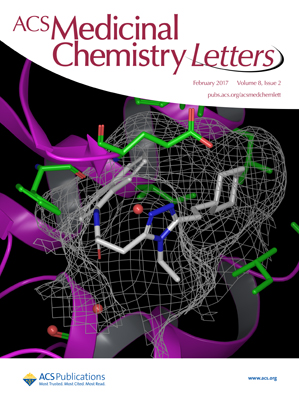新型磺胺衍生物作为Nav1.5钠通道阻滞剂治疗心房颤动
IF 3.5
3区 医学
Q2 CHEMISTRY, MEDICINAL
ACS Medicinal Chemistry Letters
Pub Date : 2025-04-21
DOI:10.1021/acsmedchemlett.5c0019210.1021/acsmedchemlett.5c00192
引用次数: 0
摘要
本重点介绍了一类新型的基于磺胺的Nav1.5钠通道阻滞剂。这些化合物优先抑制心房心肌细胞中的Nav1.5,延长有效不应期,防止心房心律失常、快速收缩。新型Nav1.5阻滞剂具有治疗心房颤动而不影响心脏其他部分功能的潜力。本文章由计算机程序翻译,如有差异,请以英文原文为准。
Novel Sulfonamide Derivatives as Nav1.5 Sodium Channel Blockers for Treating Atrial Fibrillation
This highlight describes a novel class of sulfonamide-based Nav1.5 sodium channel blockers. These compounds preferentially inhibit Nav1.5 in atrial cardiomyocytes, extending the effective refractory period and preventing arrhythmic, rapid contraction of the atria. The novel Nav1.5 blockers possess the potential to treat Atrial Fibrillation without affecting the function of the rest of the heart.
求助全文
通过发布文献求助,成功后即可免费获取论文全文。
去求助
来源期刊

ACS Medicinal Chemistry Letters
CHEMISTRY, MEDICINAL-
CiteScore
7.30
自引率
2.40%
发文量
328
审稿时长
1 months
期刊介绍:
ACS Medicinal Chemistry Letters is interested in receiving manuscripts that discuss various aspects of medicinal chemistry. The journal will publish studies that pertain to a broad range of subject matter, including compound design and optimization, biological evaluation, drug delivery, imaging agents, and pharmacology of both small and large bioactive molecules. Specific areas include but are not limited to:
Identification, synthesis, and optimization of lead biologically active molecules and drugs (small molecules and biologics)
Biological characterization of new molecular entities in the context of drug discovery
Computational, cheminformatics, and structural studies for the identification or SAR analysis of bioactive molecules, ligands and their targets, etc.
Novel and improved methodologies, including radiation biochemistry, with broad application to medicinal chemistry
Discovery technologies for biologically active molecules from both synthetic and natural (plant and other) sources
Pharmacokinetic/pharmacodynamic studies that address mechanisms underlying drug disposition and response
Pharmacogenetic and pharmacogenomic studies used to enhance drug design and the translation of medicinal chemistry into the clinic
Mechanistic drug metabolism and regulation of metabolic enzyme gene expression
Chemistry patents relevant to the medicinal chemistry field.
 求助内容:
求助内容: 应助结果提醒方式:
应助结果提醒方式:


